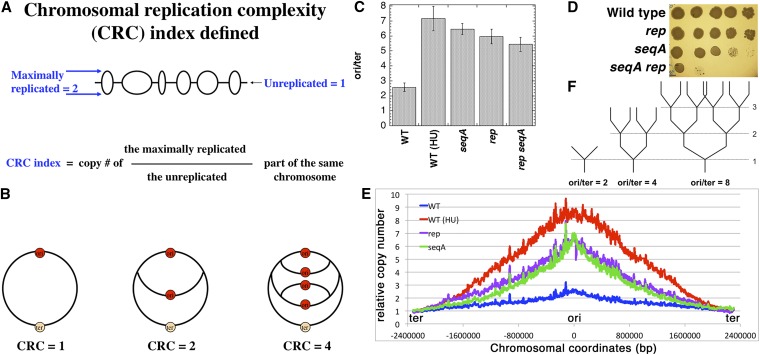Figure 1.
Increased replication complexity in cells with slow replication forks reveals the “natural” CRC limit. All cultures in Figure 1 and Figure 2 were grown at 28°; thus, the wild-type doubling time is ∼40 min, and the ori/ter ratio is ∼2. (A) A scheme of the replicating eukaryotic chromosome and the definition of the CRC index. (B) The replication complexity of the bacterial chromosome is simply expressed (and measured) as the origin-to-terminus ratio. (C) Ori/ter ratios in growing E. coli cultures of the indicated mutants (or conditions). (D) Serial dilutions of growing cultures with the corresponding genotypes were spotted to illustrate growth rate differences. (E) Chromosomal marker-frequency profiles of the growing cultures of wild-type, wild-type (HU), rep, and seqA strains. (F) Schematic chromosomal replication complexity at various ori/ter ratios. The chromosomes are shown as lines, and the replication points as Y-junctions. The chromosomes at different replication complexities are not to scale to align the replication points (numbered on the right).

